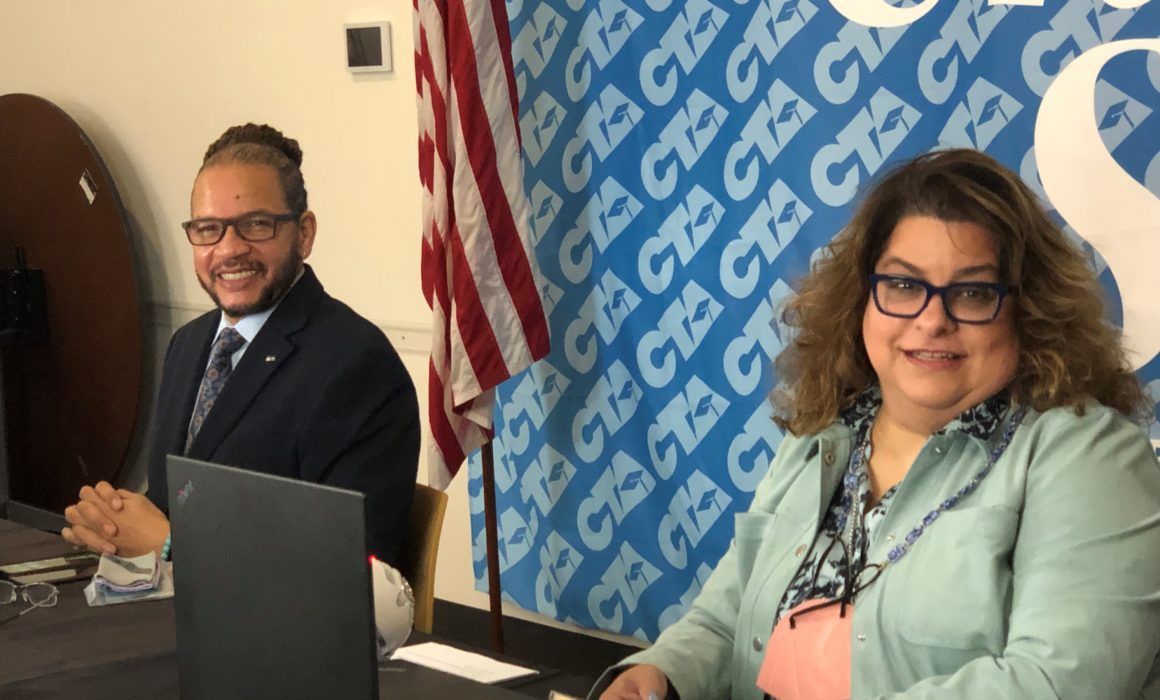
In what was planned to be a return to meeting in-person for the first time since January 2020, CTA State Council of Education met virtually this weekend after the uncontrolled spread of the COVID-19 Omicron variant forced a quick shift to a remote format only two weeks prior.
It was the kind of flexibility in the face of uncertainty that educators have exercised for almost two years. CTA President E. Toby Boyd thanked State Council members for their understanding, noting that while much has changed since the beginning of the pandemic, CTA’s focus has remained the same.

“It’s been two years since the first COVID-19 case was identified in the U.S and changed our lives. And since then, safety, guided by the science, has been our top priority — the safety of all educators, our students, and families,” Boyd said.
In his report to State Council, President Boyd addressed the impacts of Omicron on schools across the state and outlined what is being done to keep educators and students safe. Boyd said CTA continues to support in-person instruction as long as it is safe to do so.
“Educators and students must have the safety precautions they need. There must be regular testing. And there must be enough staff to run a school,” said Boyd, outlining steps that must be taken immediately in a January letter to Gov. Gavin Newsom, including high-quality masks for educators and a restoration of COVID supplemental sick leave. “No educator should have to choose between going without pay or spreading the virus to their students and their families.”

In addition to the ongoing pandemic, Boyd said there are numerous challenges facing educators and public schools, including potential voucher initiatives at the ballot box and a fringe minority that wants to prevent students from learning the truth about our nation’s history. A tall order, but Boyd said he knows CTA members are ready.
While we face a multitude of challenges, it’s not as if we don’t have the tools, the skills, and the knowledge to address them. We just need to make sure we use them, and the first step is to organize,” Boyd said. “We have the means to address the challenges we face and organizing will be key.”
A panel of educators led by CTA Vice President David Goldberg discussed the transformative power of community schools and the more than $3 billion investment from the state that could see a third of public schools become community schools in the coming years. A community school is both a place and a set of partnerships between the school and other community resources with an integrated focus on academics, health and social services, leadership, and community engagement, leading to improved student learning, stronger families and healthier communities.

“Our students deserve more than just to survive. Another world is possible,” said Goldberg, noting that more information is available at cta.org/communityschools. “Community schools are the antidote to a system that puts our students’ needs last.”
State Council also elected members to the following offices: Kisha Borden, CTA Board of Directors District P; Angela Der Ramos, NEA Board of Directors District 4; Maritza Avila, NEA Board of Directors District 5; Will Page, NEA Board of Directors District 6; and Ruth Luevand, NEA Board of Directors District 13.
The State Council of Education next meets from March 25-27, currently scheduled in-person in Los Angeles.
The Discussion 0 comments Post a Comment